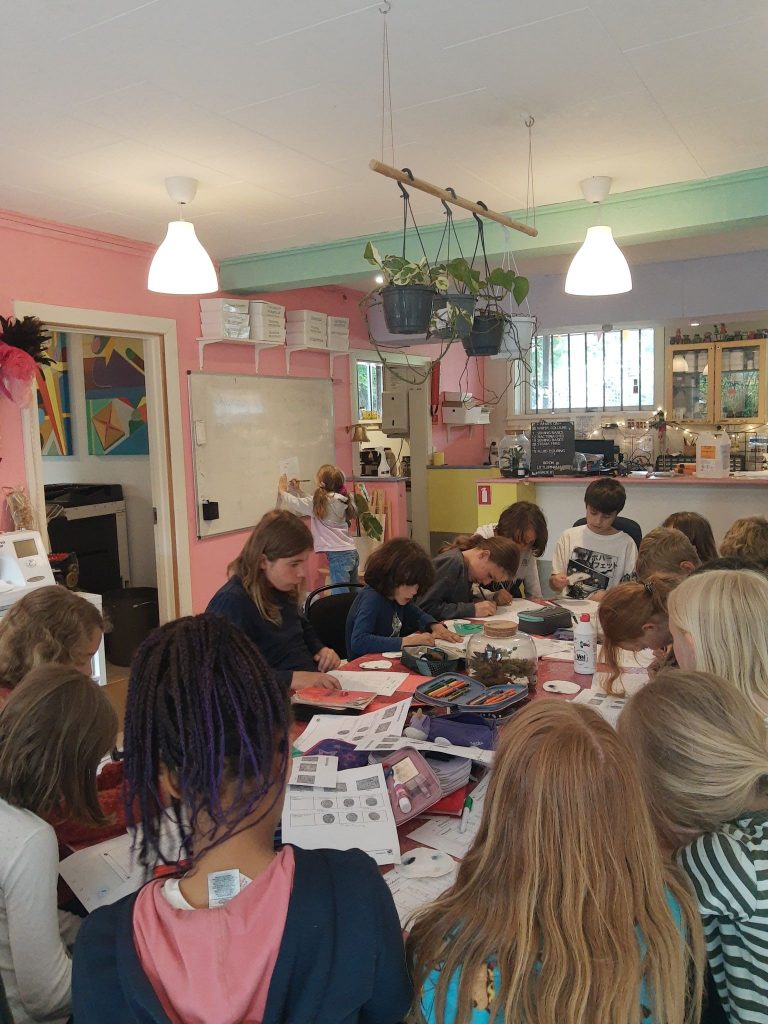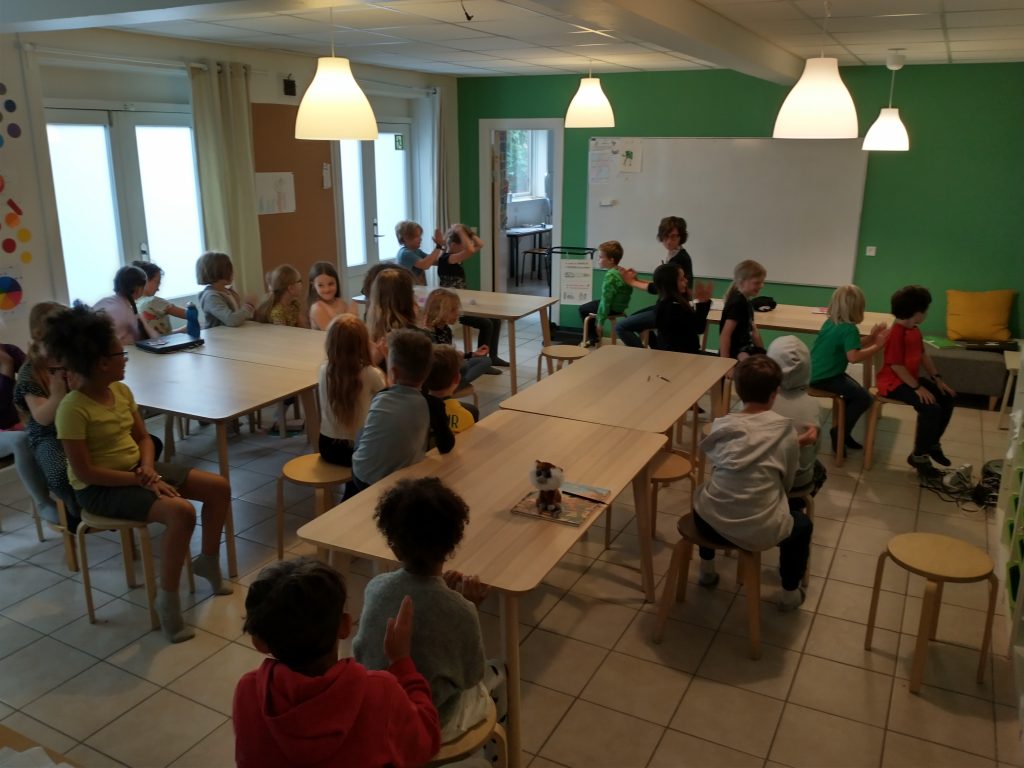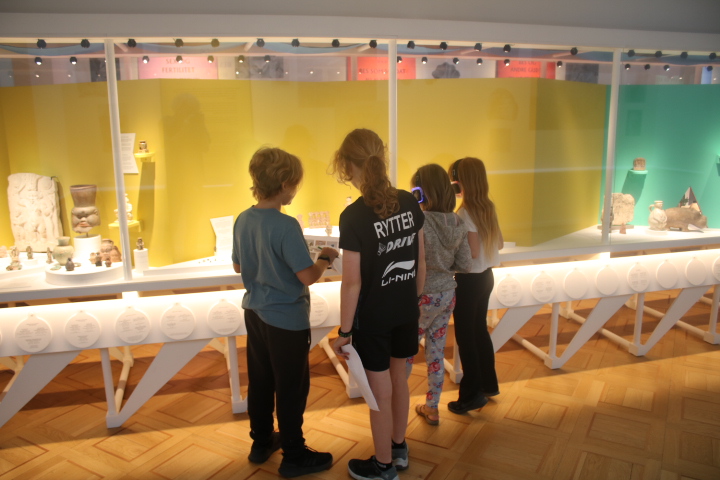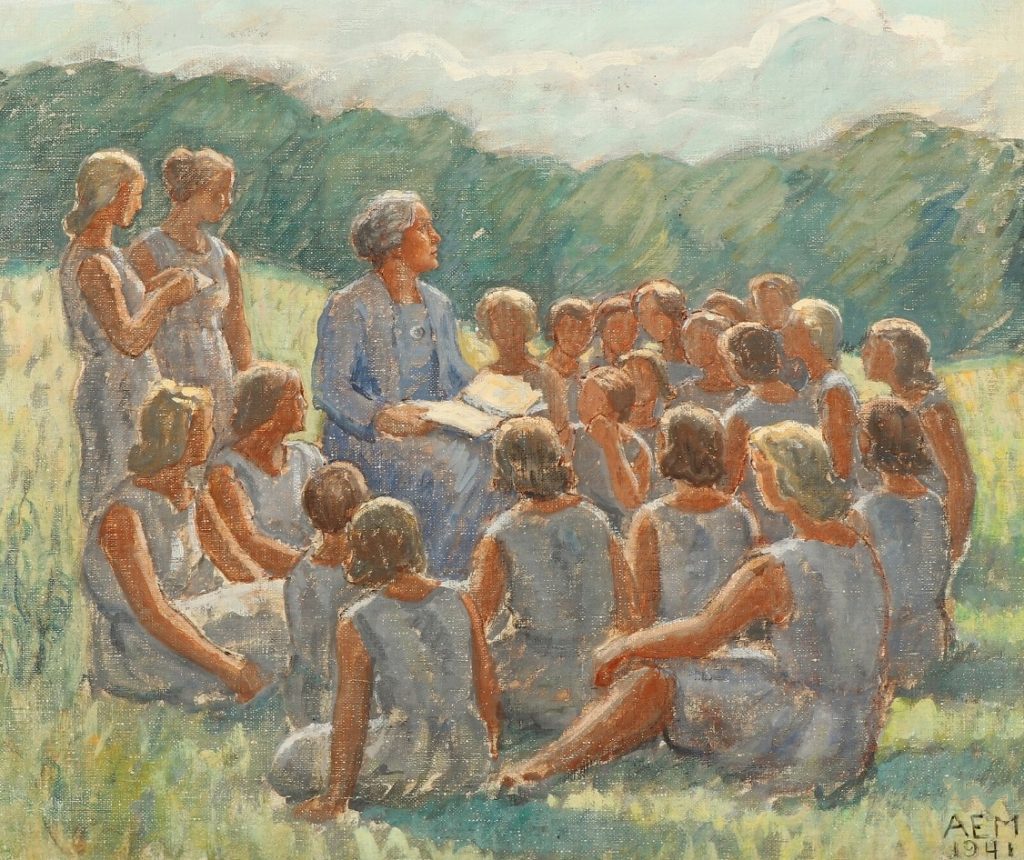Vores elever har tidligere været på besøg hos Poesiens Hus og lavet såkaldte ordbær, dvs. ord de selv finder på og selv giver en mening. Det har givet anledning til nogle sjove koncepter som fx et løbebad – et karbad med fødder, der løber mens man anvender det eller en vinterstjerne – en stjerne, der er lavet af is.
Der diskuteres for tiden i de danske medier, hvorvidt brugen af tekstsynteseværktøjer såsom ChatGPT skal betragtes som snyd, når eleverne anvender det i skolesammenhæng. Det virker som en forholdsvis ukonstruktiv tilgang til teknologien og vi har i stedet valgt at give børnene frie tøjler ift. at lege med AI’en. Det første spørgsmål vi stillede den var

Det er et ret godt svar. Man kan godt forstå, at lærerne rundt omkring i landet kan være nervøse for, at eleverne fremadrettet bare beder ChatGPT om at løse deres skriftlige opgaver. Børnene læste det op på skift, et afsnit per elev, uden som sådan at være særligt imponerede.
Dernæst bad vi systemet om at skrive en historie om et af ordbærene fra værkstedsaktiviteten hos Poesiens Hus:

Også imponerende godt.
Sprogligt er det tæt på fejlfrit, fejlene værende af typen “de var ikke skuffede” burde nok have været “de blev ikke skuffede”. Plotmæssigt er der også fejl – hvordan giver det fx mening at ansætte flere folk, når der kun er een ko at malke? Men de er klart tilgivelige og er ikke værre end i så mange andre eventyr, fx Rødhætte.
Men det var først med næste opgave, at børnene nåede til Wow!-oplevelsen. Nu bad vi om

Her fanger / opfinder den fint allegorien om den mytiske fugl som symbol på frihed og muligheder, anlægger en passende spændingskurve over fortællingen og følger en rød tråd om at anstrengelser og mod er en forudsætning for frigørelse og succes.
Børnene var nu helt på og spurgte bl.a. om, hvordan den fandt på navnene og på historierne.
Det sidste vi bad den om var:

Hvor får den det fra? Man kunne jo spørge ChatGPT – som desværre ikke altid har tid:

Heldigvis har OpenAI også en god introducerende forklaring liggende. Fremgangsmåden kan opsummeres til, at den løser et optimeringsproblem, dvs. et matematisk problem bestående af et (højt) antal variable, der hver bidrager med en vægt til en omkostningsfunktion. Den kunstige intelligens trænes ved, at man prøver sig frem med forskellige vægte for disse variable, og man gemmer (belønner) dem, der giver det bedste resultat, dvs. lavest omkostning.
Har man fx sætningen “Den hurtige bil er rød” liggende i træningssættet, kan man dække ordet “rød” til og få den til at gætte på forskellige ord i stedet. Her vil den så belønne et gæt på “rød” maksimalt, men “blå” kan også fungere (det er en farve). Man kunne også forestille sig at “farlig” ville fungere, fordi sætningen er grammatisk korrekt og at begreberne “hurtig” og “farlig” sandsynligvis allerede vil have en forbindelse (vægtet variabel) liggende et andet sted i variabelrummet. På den måde kan man ud fra et træningssæt (et stort sæt sætninger og tekster, man har samlet sammen og “renset”) få algoritmen til at ekstrapolere og syntetisere nye tekster.
Fremgangsmåden hedder reinforced learning og kan bruges på andre typer af træningssæt, fx billeder, hvor algoritmen gætter på pixelfarver i stedet for ord. OpenAI stiller billedgeneratoren DALL-E til rådighed og Midjourney er også populær. Her følger to eksempler på syntetiserede billeder fra de to generatorer ud fra oplægget, kaldet prompten “Children launching a CubeSat, Banksy style”

respektive “Female engineer surfing on a flying suitcase at high speed, seen from below, steampunk”

Rent didaktisk egner ChatGPT sig fremragende til en slags omvendt elevstyret læring, det kunne fx være tekstanalyse, hvor eleverne beder robotten om: “Skriv en sang for en modstandbevægelse, hvor beskeden skal være gemt, således at den undertrykkende magt ikke kan gennemskue det”. Derefter afkoder de, om teksten svarer til opgaven. Spoiler alert: det gør den ikke 🤣, her når bot’en klart sin grænse – man skal nok være varsom med at lade den foretage sig noget vigtigt – som fx at styre ens bil. Når det kommer til stykket er den, uanset hvor imponerende den virker, blot en plausibilitetsmaksimerende banalitetsgenerator, med hang til fabulering.
Området er i fuld udvikling og at mestre det vil i stigende grad blive en afgørende færdighed. ChatGPT & Co illustrerer, at STEAM-færdigheder (science technology, engineering, arts, mathematics) er både vedkommende og værdifulde. Koncepter som Markovkæder, optimering, machine learning og programmering er mere relevante end nogensinde. Et godt sted at gå i gang er skolens kodebase, fx Differentialligninger for børn, OpenSCAD 3D-modeller og Arduinoprogrammer.
Herunder: Lysshow implementeret vha. en Markovkæde i Arduino.







